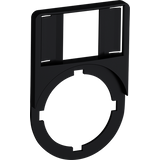- Home /
- ABB +
- Conventional Lamps /
- ABB Conventional Lamps +
- Incandescent Bulbs /
- ABB Incandescent Bulbs
ABB Incandescent Bulbs

Yeah, LEDs rule the market now — but sometimes, the old-school light still wins. There’s a reason ABB incandescent bulbs keep showing up in warehouses, control rooms, and vintage projects. They’re simple, they’re tough, and they just work the same way every time you flip the switch. No drivers, no flicker, no startup delay — just instant light.
ABB Classic lamps for real tasks
You can call them outdated, but there are places where ABB classic lamps still make perfect sense. Testing circuits, heat-sensitive setups, old control panels — places where LED behavior doesn’t match legacy gear. The filament gives a clean, continuous spectrum, ideal for inspection benches or signal fixtures.
ABB didn’t cut corners. The glass is thick, the contact base is clean brass, and the internal support wires are welded solid. You can over-voltage them a bit for tests, or run them steady in low-vibration housings — they take it without going dark halfway.
They come in clear, frosted, and reinforced versions, depending on what you’re wiring.
E27 bulbs for everyday maintenance
If you’re maintaining older lighting circuits or industrial sockets, ABB E27 bulbs are the reliable standard. They screw in cleanly, make full contact, and don’t get loose with vibration.
The filament alignment is straight, so the beam doesn’t shift off-center inside reflectors — small detail, but it matters in inspection lighting or compact fixtures.
Installers still keep them in toolboxes for one reason: they work in anything. From test benches to emergency backup lights, E27 is universal.
You can even dim them with basic triacs — no noise, no flicker, no controller issues. For low-budget repairs or quick functional checks, that simplicity saves hours.
E14 bulbs for compact luminaires
ABB E14 bulbs fit the smaller fixtures — control panels, instrument enclosures, decorative luminaires. Same reliable filament build, smaller screw base.
They’re used a lot in indicator housings or machines where space is tight but a clear visual signal’s still needed.
The heat output is predictable, which makes them safe for use in enclosed housings that were originally designed for this type of lamp. And unlike many generic versions, ABB’s sockets don’t get dark or oxidized — that means easier replacement later.
ABB Filament bulbs that keep the character
There’s a certain charm — and utility — in ABB filament bulbs. The warm tone isn’t just aesthetic; it’s functional for workshops, testing labs, and museum or stage setups where light quality matters.
They have that continuous color curve that LEDs still try to imitate. And they behave predictably under voltage fluctuations — they dim smoothly, they don’t cut out.
For small control or indicator lights, ABB also makes miniature filament versions that fit directly into signal housings. Same solid quality, same lifespan consistency.
Where they still make sense
In testing stations, control cabinets, or vintage restoration — incandescent still solves problems LEDs can’t. You can use them as resistive loads, visual indicators, or even small heat sources.
They’re also handy for thermal simulation and calibration of protection devices — old-school but effective.
ABB builds these lamps with industrial reliability in mind. The focus isn’t “retro style” — it’s durability, voltage accuracy, and consistent color rendering.
Wholesale and B2B supply
At Bank of Lamps, we supply the full ABB line: incandescent bulbs, E27 bulbs, E14 bulbs, filament bulbs, and classic lamps — all available for B2B and wholesale distribution across Europe.
We work with maintenance engineers, test labs, and electrical distributors who still depend on tried-and-true lighting technology for specific applications.
Orders ship fast to Germany, Netherlands, France, UK, Spain, Baltics — always fresh stock with datasheets and technical info attached.
Because sometimes, the simplest solution really is the best one. ABB’s incandescent bulbs prove that reliability doesn’t go out of style.